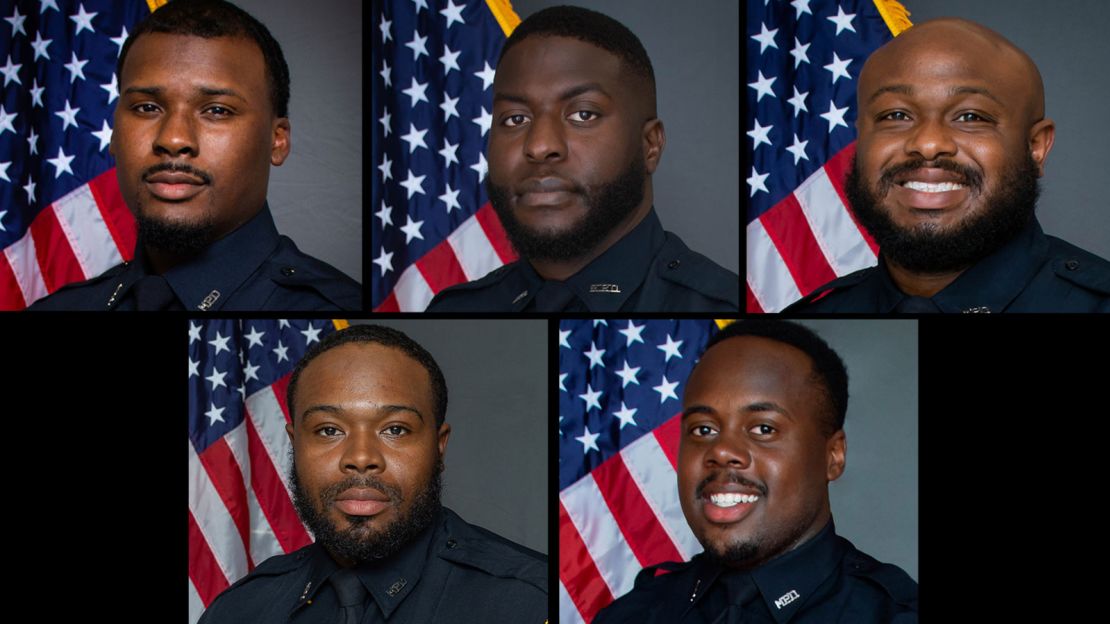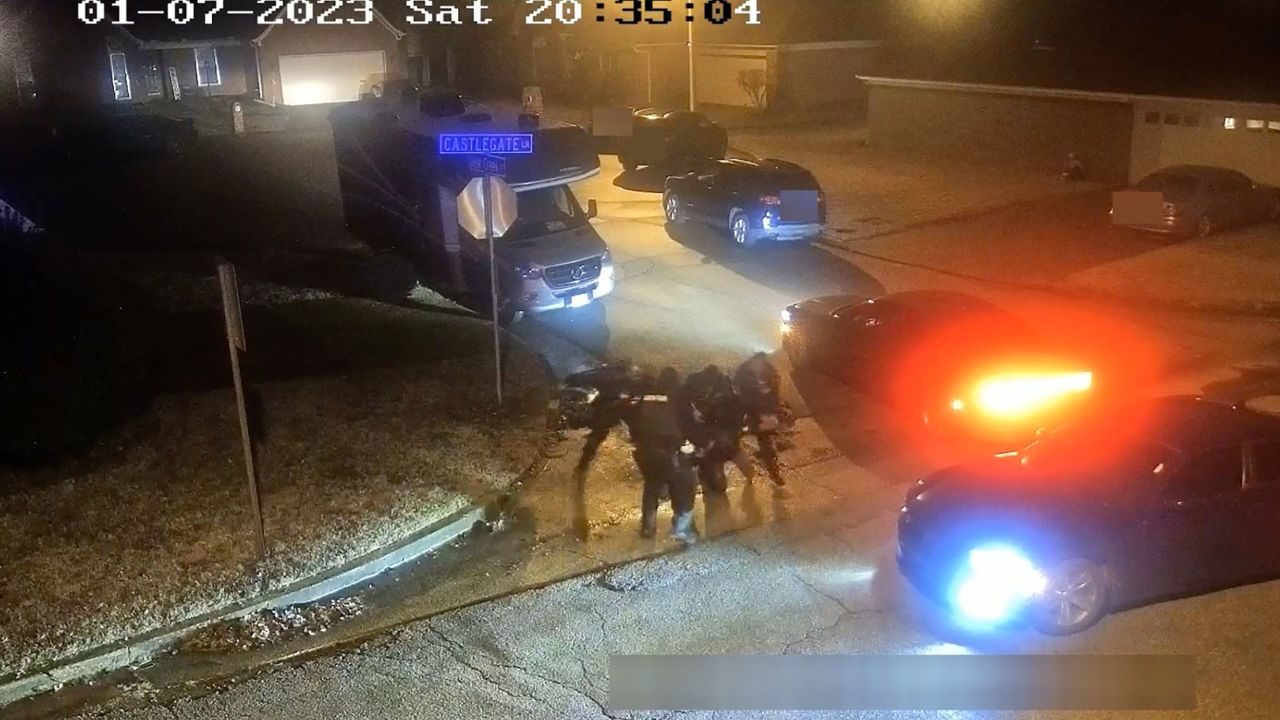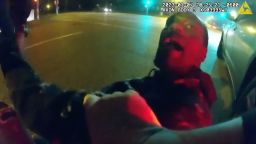It’s been almost three weeks since a traffic stop in Memphis led to a violent arrest and, three days later, the death of the 29-year-old Black driver.
Tyre Nichols was hospitalized after he was pulled over on January 7, police have said. Five Memphis Police Department officers, who also are Black, were fired after an internal investigation and are facing criminal charges, including second-degree murder.
Key questions remain unanswered as the nation – already alert to how police sometimes treat people of color, especially following the mass protests of 2020 – waits for police to release footage of the incident.
Here’s what we know:
The police ‘confrontation’
On January 7, around 8:30 p.m., Memphis officers pulled over a vehicle for suspected reckless driving, according to a statement from Memphis police.
“A confrontation occurred” between officers and the vehicle’s driver – later identified as Nichols – who then fled on foot, according to Memphis police. Officers apprehended him and “another confrontation occurred,” resulting in Nichols’ arrest, police said.
The incident happened a few blocks away from his home, Memphis Police Chief Cerelyn “CJ” Davis told CNN’s Don Lemon on Friday.
“We’ve looked at cameras, we’ve looked at body-worn cameras, even if something occurred prior to this stop, we’ve been unable to substantiate that at this time,” Davis said.
“We’ve taken a pretty extensive look to determine what the probable cause was and we have not been able to substantiate that,” she said. “It doesn’t mean that something didn’t happen, but there is no proof.”
Also unclear are who was involved in the initial police encounter, how far Nichols fled on foot, how officers apprehended him, how long these “confrontations” lasted, or why officers felt compelled to confront Nichols twice.
Beyond police body camera footage, police looked at surveillance cameras around the city at businesses – anything that could help paint a picture about what happened prior to the traffic stop, Davis said.
After the officers stop Nichols’ car, there is a physical interaction involving Nichols as the officers are trying to get him out the car, but it’s still unknown what the original reason was for the stop, the chief said.
From the beginning of the encounter, the chief said, the officers involved were riled up. “The escalation was already at a high level,” Davis said.
The nature of the traffic stop was very aggressive with loud communication, and it escalated from there, she said.
During the initial altercation involving several officers, pepper spray was deployed, and Nichols ran, Shelby County District Attorney Steve Mulroy said at a Thursday news conference.
Nichols got away, but the officers “found him again at another location and at that point there was an amount of aggression that is unexplainable,” he said.
“There was another altercation at a nearby location at which the serious injuries were experienced by Mr. Nichols,” Mulroy continued. “After some period of time of waiting around afterward, he was taken away by an ambulance.”
“I heard him call out for his mother, for his mom,” Davis said, referring to the video. “Just the disregard for humanity … That’s what really pulls at your heartstrings and makes you wonder: Why was a sense of care and concern for this individual just absent from the situation by all who went to the scene?”
There then was an “elapsed period of time” before getting medical help for Nichols after he was injured during the traffic stop by Memphis police officers, Mulroy said.
“After some period of time of waiting around afterward, he was taken away by an ambulance,” he said.
On January 10, three days after the stop, Nichols died due to injuries sustained in the “use-of-force incident with officers,” according to a Tennessee Bureau of Investigation statement.
Nichols suffered “extensive bleeding caused by a severe beating,” according to preliminary results of an autopsy commissioned by attorneys for his family.
“We can state that preliminary findings indicate Tyre suffered extensive bleeding caused by a severe beating, and that his observed injuries are consistent with what the family and attorneys witnessed on the video of his fatal encounter with police on January 7, 2023,” attorney Benjamin Crump said in a statement.
CNN has asked Crump for a copy of the autopsy commissioned by the family, but he said the full report is not yet ready. Officials have also not released Nichols’ autopsy.
All five officers are facing charges in Nichols’ death
After its internal investigation, Memphis police identified and fired five officers involved in the traffic stop due to their violation of multiple department policies.
Officers Tadarrius Bean, Demetrius Haley, Emmitt Martin III, Desmond Mills, Jr. and Justin Smith were terminated for failing in their “excessive use of force, duty to intervene, and duty to render aid,” the department said in a statement.
Read more
Martin III, Smith, Bean, Haley and Mills, Jr. have each been charged with second-degree murder, aggravated assault, two charges of aggravated kidnapping, two charges of official misconduct and one charge of official oppression, according to both Shelby County criminal court and Shelby County jail records.
The Memphis Police Association, the union representing the officers, declined to comment on the terminations beyond saying that the city of Memphis and Nichols’ family “deserve to know the complete account of the events leading up to his death and what may have contributed to it,” according to a statement.
All five officers have been released on bond.
In a joint news conference Thursday afternoon, Blake Ballin, an attorney for Mills, and William Massey, Martin’s attorney, said they have not yet watched the video of the police encounter.
“No one out there that night intended for Tyre Nichols to die,” Massey said.
Ballin described Mills as a “respectful father,” who was “devastated” to be accused in the killing.
Other officers’ attorneys did not immediately respond to requests for comment.
Davis “expected serious charges, I really did,” the chief said. “Actually the charges that were placed, at least the administrative charges, were probably the most severe that I’ve seen in my career, but they were absolutely appropriate,” Davis said.
It’s still unclear what role each officer played in the incident.
There is no evidence now that the officers involved had acted this way in the past, Davis said, adding police are “taking a deeper dive into previous arrests, previous video camera footage.”

It’s unclear to what extent those employees were taking care of Nichols and what type of aid was rendered, if any at all.
Davis said her assessment is that the EMTs “failed to render proper care.”
“They began to render care and concern but it was long after several minutes, which was concerning for all of us that we see a number of failures where individuals did not exercise the amount of care that we are responsible for.”
“During a period of time before the EMS services arrived on scene, Fire is on scene. And they are there with Tyre and the police officers prior to EMS arriving,” Nichols’ family attorney Antonio Romanucci told CNN, adding there were “limitations” on how much he could say.
While she has met the officers, the chief said she didn’t know them personally. From her impressions of them, she said they seemed like other officers, and were respectful when they saw her, but what she saw in the video was more of a “groupthink mentality” where no one took a step to intervene.
Two Memphis Fire Department employees who were part of Nichols’ “initial patient care” have been “relieved of duty,” pending the outcome of an internal investigation, department Public Information Officer Qwanesha Ward told CNN’s Nadia Romero.
How Nichols’ family learned of the violent encounter
Officers with the Memphis Police Department went to the home of RowVaughn Wells, Nichols’ mother, between 8 and 9 p.m. on January 7 to tell her about Nichols’ arrest, his mother told Lemon Friday.
Officers told Wells her son was arrested for a DUI, pepper sprayed and tased. Because of that, they said he was going to the hospital and would later be taken to booking at the police station, she said.
“They then asked me was he on any type of drugs or anything of that nature because they were saying it was so difficult to put the handcuffs on him and he had this amount of energy, superhuman energy,” she said. “What they were describing was not my son so I was very confused.”
Officers said she couldn’t go to the hospital, Wells said, and when asked where her son was, they said he was “nearby” but wouldn’t tell her exactly where.
“Now that I’m actually putting things together, I believe they were trying to cover it up when they first came to my door,” she said.
Around 4 a.m. ET, Wells said a doctor called to summon her to the hospital to see her son.
?“The doctor proceeded to tell me that my son had went into cardiac arrest and that his kidneys were failing,” she said. “This doesn’t sound consistent to somebody being tased or pepper sprayed,” as the police had told her.
?“When my husband and I got to the hospital and I saw my son, he was already gone,” Wells said. “They had beat him to a pulp.”
?Wells described the horrific injuries her son had when she saw him in the hospital.
?“He had bruises all over him. His head was swollen like a watermelon. His neck was busting because of the swelling. They broke his neck. My son’s nose look like a S,” she said. “They actually just beat the crap out of him. And so when I saw that, I knew my son was gone, the end. Even if he did live, he would have been a vegetable.”
Who was Tyre Nichols?
Nichols was the baby of his family, the youngest of four children and he loved being a father to his son, his family said.
He was a “good boy” who spent his Sundays doing laundry and getting ready for the week, his mother, RowVaughn Wells, said.
“Does that sound like somebody that the police said did all these bad things?” Wells said. “Nobody’s perfect OK, but he was damn near.”
Nichols moved to Memphis before the Covid-19 pandemic and got stuck there when things shut down, his mother said.
When he wasn’t working the second shift at FedEx, Nichols enjoyed photography and skateboarding, something he had been doing since he was 6.
Nichols had Crohn’s disease, a digestive issue, and was a slim 140 to 145 pounds despite his 6-foot-3-inch height, his mother said.
What police have said since the incident
On January 18, the Department of Justice said a civil rights investigation was opened into Nichols’ death.
Acknowledging the Tennessee Bureau of Investigation’s ongoing efforts, the US Attorney’s office “in coordination with the FBI Memphis Field Office and the Civil Rights Division of the Department of Justice, has opened a civil rights investigation,” US Attorney for the Western District of Tennessee, Kevin G. Ritz said, declining to provide further details.
The Memphis police chief condemned the actions of officers involved.
“I was outraged, it was incomprehensible to me, it was unconscionable,” Davis said. “I felt that I needed to do something and do something quickly. I don’t think I’ve witnessed anything of that nature in my career.”
Davis said the video showing the beating of Tyre Nichols is as bad, if not worse, than the 1991 video showing the Los Angeles Police beating of Rodney King, a motorist whose savage encounter with police sparked outrage after footage was released.
“I was in law enforcement during the Rodney King incident and it’s very much aligned with that same type of behavior,” she said. “I would say it’s about the same, if not worse.”
“You’re going to see acts that defy humanity, you’re going to see a disregard for life, duty of care that we’re all sworn to, and a level of physical interaction that’s above and beyond what is required in law enforcement,” she said of the footage.
“I’m sure, as I said before, individuals watching will feel what the family felt and if you don’t, you’re not a human being.”
Family and attorneys have seen footage of the incident
CNN has obtained portions of the police scanner audio leading up to Nichols’ arrest. Portions of the audio are inaudible, but you can hear a brief part of the conversation between an officer and the dispatcher.
An officer can be heard saying, “We got one Black male running,” and giving instructions to “run that car registration tag and see what’s the address,” followed by what sounds like Nichols in distress.
It’s not clear where this audio fits in the sequence of the incident or which officer is speaking.
Family attorneys did watch the video on Monday and described it as “heinous.” Nichols was tased, pepper-sprayed and restrained, Crump said, and he, too, compared it to the LAPD beating of Rodney King.
Crump described the video as “appalling,” “deplorable” and “heinous.” He said Wells, Nichols’ mother, was unable to get through viewing the first minute of the footage after hearing Nichols ask, “What did I do?” At the end of the footage, Nichols can be heard calling for his mother three times, the attorney said.
Nichols fled from the police, according to Rodney Wells, his stepfather, because he was afraid.
“Our son ran because he was scared for his life,” Rodney Wells said Monday. “He did not run because he was trying to get rid of no drugs, no guns, no any of that. He ran because he was scared for his life. And when you see the video, you will see why he was scared for his life.”
Rodney Wells didn’t want his wife to see the video, but attorneys asked that she try to watch as much of it as possible.
“She heard one word and had to leave out of the room,” Rodney Wells said. “And that was when they initially pulled him out of the car. He said, ‘What did I do?’”?
In Rodney Wells’ own words, this is what is on the video:
“He said, ‘What did I do? Why are y’all doing this to me? What did I do?’ and they proceeded to snatch him out of the car and was trying to wrestle him to the ground. And he got scared. So he was athletic enough to get out of their situation and run, and he was trying to run home, because he was three blocks from the house when they stopped him,” Wells continued.
“And when I saw the police officer, you know, they have this little, like, stick, this metal thing that they pull out … I saw them pull that out and started beating my son with it. And I saw officers hitting on him, I saw officers kicking him. One officer kicked him like he was kicking a football, a couple of times,” Wells told Lemon.
“But the most telling thing about the video to me was the fact that it was maybe ten officers on the scene and nobody tried to stop it or even after they beat him and they propped him up against the car, no one rendered aid to him whatsoever. They walked around, smoking cigarettes like it was all calm and like, you know, bragging about what happened,” the stepfather said.
“He was sitting there, and then he slumped over. And an officer walked over to him and said, ‘Sit back up,’ while he’s handcuffed. So, he had to – they prop him back up, and he slumped over again, and they prop him back up again, but no one was rendering aid,” he continued.
“I saw some fire department people come out there and they just walked around and nobody showed him any aid, and they supposed to be trained in first aid. By the time the paramedic truck pulled up, that’s when we couldn’t see anything because the paramedic truck blocked the camera,” Rodney Wells said.
Nichols’ family wants the officers charged with murder, family attorney Romanucci told CNN’s Erin Burnett Wednesday evening.
Video footage of the incident will be released on YouTube in four parts, showing the initial stop, the stop near Nichols’ home and body-worn camera footage of the individuals at the scene, sometime after 7 p.m. ET on Friday, Davis confirmed.
In timing the release, “we thought about schools, we thought about businesses and we felt like Friday afternoon if there were individuals [who] decided they wanted to peacefully protest, at least other individuals would have gone home, schools would be out and it wouldn’t be as disruptive as it would have been if we released it on … on a Wednesday afternoon.”
“A lot of the people’s questions about what exactly happened will, of course, be answered once people see the video,” Mulroy told CNN’s Laura Coates on Tuesday night, noting he believes the city will release enough footage to show the “entirety of the incident, from the very beginning to the very end.”
Correction: A previous version of this story misspelled RowVaughn Wells' first name.
CNN’s Eric Levenson, Nick Valencia, Christina Zdanowicz, Jamiel Lynch, Jaide Timm-Garcia, Travis Caldwell, Jason Hanna and Chris Boyette contributed to this report.




